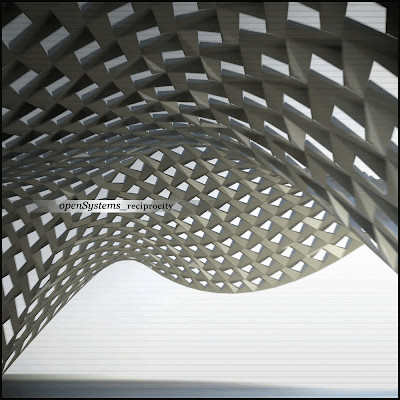

good luck knot

Reciprocal Frame Architecture by Olga Popovic Larsen
A reciprocal frame is a class of self-supporting structure made of three on more beams and which requires no center support to create roofs, bridges or similar structures.A reciprocal roof is assembled by first installing a temporary central support that hold the first rafter at the correct height. The first rafter is fitted between the wall and the temporary central support and then further rafters are added, each resting on the last. The final rafter fits on top of the previous rafter and under the very first one. The rafters are then tied with wire before the temporary support is removed. The failure of a single element may lead to the failure of the whole structure. [wikipedia]





























